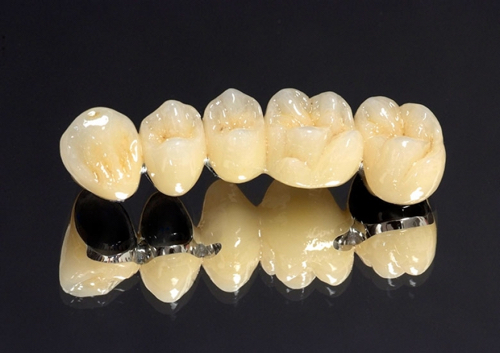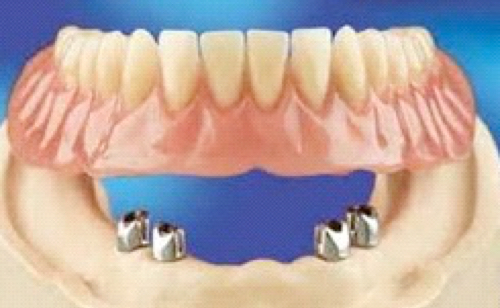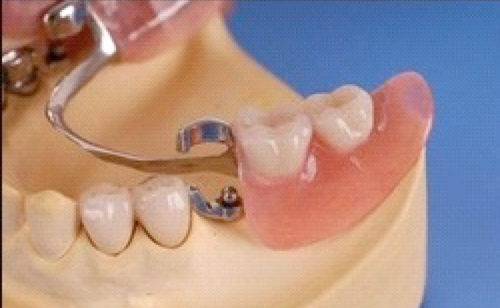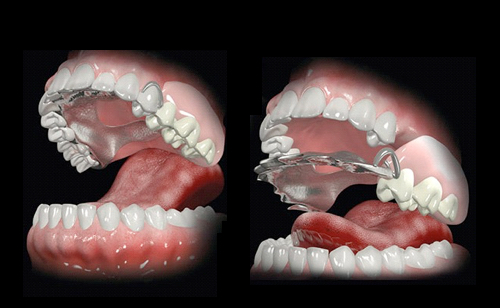Prostheses
Crowns and Bridges
If the root part of a tooth is well set and healthy in the bone, but the crown part is incomplete, weakened, or needs aesthetic repair, a crown will be made to restore it. If necessary, the tooth is preserved with root canal treatment and pin construction. After precise preparation, an impression is made, which will be cast into a gypsum model by a dental technician to obtain an exact replica of the oral situation. With the traditional method, the frame of the crown is moulded first by wax then by a noble metal. This frame is covered with tooth-coloured ceramics, making it aesthetically similar to the surrounding teeth.
Modern technology allows us to construct a digitally designed frame and then use a computer to direct the carving. This also means there is a greater range of materials we can choose from, and the crown can be made of different tooth-coloured materials.

Hidden Anchored Removable Replacements
If the position of the retainable teeth in the jaw do not allow fixed replacements (bridges) to be made, then the removable parts that replace the missing teeth are attached to the remaining teeth in the safest and most stable manner possible. This is done using invisible precision elements, undetectable to both the patient and others, even when they eat and talk.
In this case, the patient’s own teeth are covered with a metal-ceramic crown (this includes the anchoring elements). The removable part is a prosthesis of plastic teeth placed on a metal frame.



Temporomandibular Joint and Chewing Function
It is our policy to regard the mouth as a functional entity. All our treatments share the same objective: the primary aim is to maintain or restore the chewing function and to preserve the health of the temporomandibular joint. In order to achieve this, we use state-of-the-art tools and methods to capture occlusion and articulation (biting). Nonetheless, our specialist helps solve already existing joint issues.
Teeth grinding
Modern lifestyle can produce stress situations resulting in anxiety and tension that leads to involuntary night-time constriction and grinding. This is often unknown to the individual, as it does not always cause subjective complaints. Most of the time, it is the partner who draws attention to the problem. Teeth grinding may lead to a defect of the temporomandibular joint and cause abnormal dental abrasion in the long term, which may significantly affect the quality of life over time. The solution to this is heeding the expert’s advice and wearing an overnight bite-guard splint prepared by a dental technician.